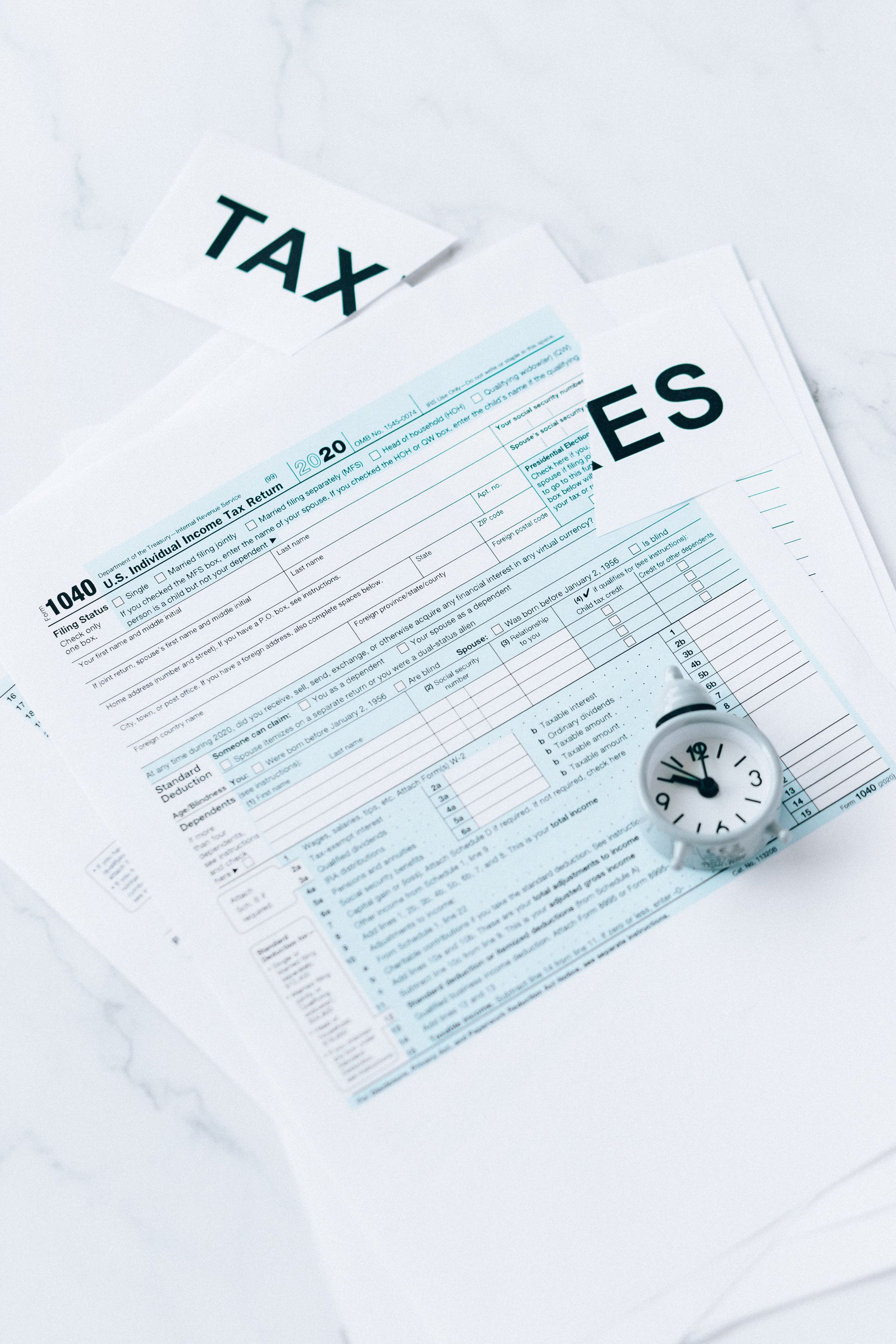Tax-Effective Remodeling: Strategies to Minimize Home Improvement Tax Liability
The success stories of savvy homeowners and businesses showcase that the synergy of thoughtful remodeling and tax considerations can lead to a space that not only reflects your vision but significantly bolsters your financial well-being.

In the world of home improvement, unlocking the potential for tax-effective remodeling can be a game-changer for homeowners. This strategic approach not only transforms living spaces but also brings significant financial advantages. As we delve into the intricacies of tax-effective remodeling, prepare to discover a realm where savvy decisions not only enhance your surroundings but also contribute to substantial savings.
The journey to minimizing tax liability begins here, if you're looking to revamp your residence, promising a fusion of innovative upgrades and fiscal wisdom. Let's embark on a transformative exploration where every improvement echoes with the sound of financial empowerment.
Understanding Tax Implications
Embarking on a home improvement journey brings not only aesthetic enhancements but also a nuanced landscape of tax implications. Understanding these financial intricacies is crucial for informed decision-making. Homeowners and business owners alike need to recognize that certain expenses incurred during remodeling projects can be eligible for tax benefits, while others may not qualify.
Deductible expenses often include improvements that directly contribute to the property's value or energy efficiency. Examples encompass energy-efficient upgrades like solar panels or insulation installations. On the other hand, non-deductible expenses may involve purely cosmetic changes without a direct impact on the property's value, such as luxurious wallpaper or high-end decorative items.
Navigating this terrain requires a discerning eye for distinguishing between enhancements that align with tax benefits and those that fall outside the deductible spectrum. As we delve deeper into tax implications, this knowledge will serve as a compass, guiding you towards financially advantageous remodeling choices. Get ready to unravel the intricacies of deductible and non-deductible expenses, ensuring that every investment in your home or business yields not just visual appeal but also potential tax benefits.

Key Tax Credits and Deductions
Unlocking the full potential of tax-effective remodeling involves tapping into specific tax credits and deductions designed to bolster your financial standing. As you navigate the landscape of home improvements, here are key avenues to explore:
1. Energy Efficiency Credits
Explore credits for eco-friendly enhancements like solar panels, energy-efficient windows, and HVAC systems. Eligibility often depends on meeting specific energy-saving criteria.
2. Home Office Deductions
Uncover deductions for home office renovations, catering to the increasing trend of remote work. Ensure compliance with guidelines for a designated and exclusively used workspace.
3. Medical Expense Deductions
Delve into deductions for home modifications related to medical needs, such as ramps or accessible bathrooms. Understand the threshold for qualifying medical expenses.
4. Mortgage Interest Deductions
Leverage deductions related to mortgage interest for certain home improvements. Familiarize yourself with limits and conditions to optimize this benefit.
5. First-Time Homebuyer Credits
Explore credits available for first-time homebuyers undertaking qualifying improvements. Confirm eligibility based on your status and the nature of the improvements.
To claim these benefits effectively, meticulous record-keeping is paramount. Maintain detailed documentation of expenses, receipts, and project specifics. Consider consulting with a tax professional to ensure accurate adherence to eligibility criteria and maximize your potential benefits.
This strategic approach ensures that your home improvement ventures not only elevate your living or working space but also contribute to substantial financial gains through tailored tax credits and deductions. Get ready to transform your surroundings while optimizing your fiscal landscape.
Strategic Planning
Strategic planning is the cornerstone of a successful tax-effective remodeling endeavor, where every decision contributes not only to the beauty of your space but also to potential financial gains. Here's a roadmap for aligning your remodeling projects with tax benefits:
1. Define Your Goals
Clearly outline your objectives, whether it's energy efficiency, increased property value, or accommodating specific needs.
2. Research Tax Incentives
Thoroughly investigate available tax credits and deductions that align with your project goals. Prioritize improvements that offer both aesthetic and financial benefits.
3. Budget Wisely
Develop a comprehensive budget that considers eligible tax benefits. Allocate resources to projects that maximize returns through credits or deductions.
4. Time Your Projects
Understand the timing implications of certain improvements for tax purposes. Plan renovations strategically to optimize benefits in the relevant tax year.
5. Document Everything
Keep meticulous records of expenses, contracts, and project details. Comprehensive documentation is vital for claiming tax credits and deductions.
6. Consult with a Tax Professional
Emphasize the importance of seeking guidance from a tax professional. Their expertise ensures compliance with regulations and maximizes potential benefits.
By incorporating tax considerations into your remodeling strategy, you not only enhance the functionality and aesthetics of your space but also cultivate a financially savvy approach.
Remember, consulting with a tax professional is a proactive step that can provide tailored insights, ensuring your projects align seamlessly with tax regulations and yield the optimal financial advantages. Let your remodeling journey be a harmonious blend of creativity and fiscal wisdom.

Choosing Tax-Friendly Projects
When it comes to tax-friendly home improvement projects, strategic choices can significantly amplify your financial benefits. Consider these projects that not only enhance your living or working space but also align seamlessly with tax advantages:
1. Energy-Efficient Upgrades
Invest in projects like solar panel installations, energy-efficient windows, or insulation. These improvements often qualify for tax credits while reducing long-term energy costs.
2. Home Office Renovations
Tailor your home office to meet remote work demands with eligible deductions for renovations. Ensure the space is exclusively used for work to maximize tax benefits.
3. Accessibility Enhancements
Undertake modifications to enhance accessibility, such as ramps or widened doorways. Qualifying expenses for medical needs may be eligible for deductions.
4. Smart Technology Integration
Integrate smart home technologies for energy efficiency and security. Some smart upgrades may qualify for tax credits while adding modern functionality.
5. First-Time Homebuyer Improvements
If you're a first-time homebuyer, prioritize improvements that align with available credits. This could include energy-efficient appliances or structural enhancements.
Remember, the key is to select projects that not only offer immediate visual appeal but also contribute to long-term savings and potential tax benefits. Aligning your personal and financial goals with tax-friendly improvements ensures that each renovation becomes a strategic investment in both your immediate surroundings and your overall financial well-being.
How to File Home Improvement Tax Credits
Filing for home improvement tax credits can be a cost-effective way to offset the expenses of your renovation projects. Here's a step-by-step guide on how you can claim these benefits.
1. Understand Eligible Projects
Not all home improvement projects qualify for tax credits. Typically, tax credits are available for projects that increase your home's energy efficiency or adapt your home for medical purposes. For example, installing solar energy systems, energy-efficient windows, or accessibility improvements for disabled individuals may qualify.
2. Keep Records
Maintain detailed records of all your home improvement projects. This includes invoices, receipts, and contracts that indicate the cost of materials and labor. It's also helpful to keep before-and-after photos as a visual record.
3. Get Certification
Some energy-efficient improvements require a Manufacturer's Certification Statement, a signed statement from the manufacturer certifying that the product or component qualifies for the tax credit.
4. File the Correct Form
When tax season arrives, you’ll need to complete the correct IRS tax form. For energy efficiency credits, you'll generally use IRS Form 5695, "Residential Energy Credits." For medical-related improvements, these costs are usually included in your total medical expenses on Schedule A, Form 1040.
5. Consult a Tax Professional
Tax laws can be complex and change frequently. Always consult a tax professional to ensure you're maximizing your credits and deductions correctly.
Remember, home improvement tax credits can significantly reduce your tax liability, making your DIY projects even more cost-effective. Be sure to take advantage of these where possible.

Record-Keeping Tips
Accurate record-keeping is the linchpin of maximizing tax benefits from your remodeling projects. Here are essential tips to ensure your documentation is thorough and organized:
1. Create a Dedicated Folder
Establish a digital or physical folder specifically for your remodeling project. Keep all receipts, contracts, and relevant documents in one easily accessible location.
2. Detailed Receipts
Request detailed receipts for all materials, labor, and professional services. Ensure they clearly outline the nature of the expense and the date of the transaction.
3. Digital Documentation
Consider digitizing your records for easy retrieval and backup. Use cloud storage or specialized apps to store and organize your documents securely.
4. Project Timeline
Maintain a timeline of your remodeling project, noting when each phase was completed. This chronological record aids in aligning expenses with tax years.
5. Communication Log
Keep a log of communications with contractors or professionals. Document discussions about project scope, changes, and any relevant tax considerations.
By adhering to these record-keeping practices, you not only streamline the tax filing process but also provide a comprehensive overview of your remodeling journey. This meticulous approach ensures that when the time comes to claim tax credits or deductions, you have a well-organized dossier to substantiate your eligible expenses, maximizing your financial benefits.
Future Trends and Tax Considerations
As the landscape of home improvement evolves, staying attuned to emerging trends is not only a design choice but a strategic financial decision. Consider these future trends and their potential tax implications:
1. Green Building Technologies
Increasing emphasis on eco-friendly materials and construction methods may result in additional tax credits for sustainable home improvements. Stay informed about evolving environmental policies that could impact tax incentives.
2. Smart Home Integration
The rise of smart home technologies not only enhances convenience but may also have associated tax benefits. Investigate potential credits for incorporating energy-efficient and smart home features.
3. Home Office Evolution
The continued growth of remote work may lead to ongoing tax considerations for home office renovations. Monitor tax regulations related to remote work to optimize potential deductions.
In conclusion, tax-effective remodeling is a strategic pathway to not only enhancing your living or working space but also fortifying your financial foundation. By understanding tax implications, leveraging key credits and deductions, and embracing trends with fiscal foresight, every renovation becomes an investment in both aesthetics and long-term savings.
Ready to embark on a tax-effective remodeling journey? Explore SimpleDirect's resources for personalized financial guidance. Our experts are here to support your strategic decisions. Visit www.getsimpledirect.com for tools and services tailored to elevate your space and optimize your financial landscape. Your dream renovation with financial wisdom starts here.

